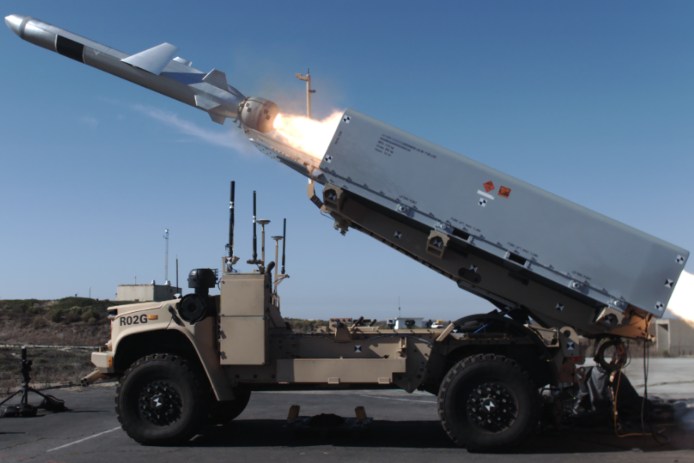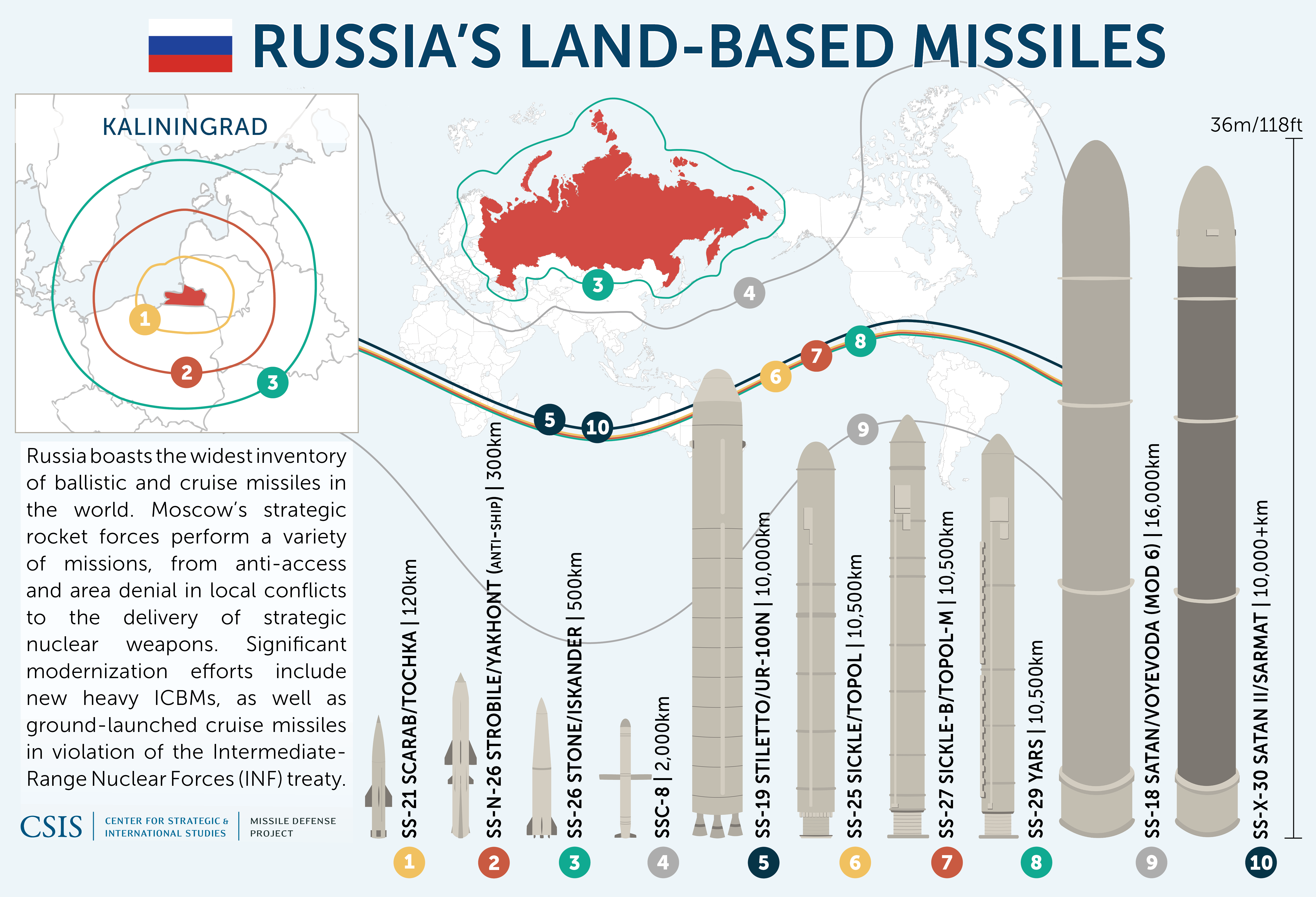Table Of Content

Significant costs can be avoided by modifying existing or planned missiles rather than commencing a new developmental program. The Long Range Stand Off missile (LRSO)—a replacement for the current air-launched cruise missile—is already under development and may be adaptable for use on a submarine. Likewise, the US Navy should evaluate whether the current fifth-generation Tomahawk sea-launched cruise missile could be suitable for this role. After all, a previous version was employed with a nuclear warhead during the Cold War. The W80-4 warhead, now under development by NNSA for the LRSO, could be adapted for use in the SLCM-N.
AFRL to Construct AI, Machine Learning Research Facility in Ohio

The cost of using these cheaper interceptors, however, was operational risk, allowing the missile within a mile of the roughly $2 billion ship and all of the sailors on it before it was shot down. LRSO is slated to replace the AGM-86B air-launched cruise missile, which was designed in the 1970s. Air Force officials have argued that the legacy ALCM has become more difficult to maintain as its supply base becomes obsolete, and its effectiveness gets increasingly compromised as adversaries field more sophisticated air defense systems.
Latest from Breaking Defense
It's powered by both a rocket booster and turbofan jet engine made by Williams International. According to PBS, the rocket booster engine launches the Tomahawk in the air (hence all the smoke you may see in news broadcasts or photos you see of the missile) and then its jet engine takes the missile the rest of the way to its target. In 2017, Raytheon’s Tomahawk program manager told reporters at an event at the missile plant in Tucson, Ariz., that the navigation system upgrades will ensure the missile can strike targets even if GPS is taken down. The Navy’s ask that MACE be able to carry a variety of interchangeable payloads and seekers points to multiple applications as well.
Post navigation
The Department of Defense announced today that the multi-year Low-Cost Cruise Missile (LCCM) Joint Capability Technology Demonstration (JCTD) project successfully transitioned three primary technologies to programs of record or development projects. The LCCM JCTD was initiated to advance a decentralized autonomy module for low-cost, conventional, collaborative cruise missiles; the integrated management team developed a new air vehicle and launcher, an autonomy software module, and a jam-resistant datalink. Given that the latest versions of the Navy’s Boeing BA -made air-launched (and ship-launched) AGM-84 Block II Harpoon anti-ship cruise missiles cost approximately $3 million per copy, the service desires MACE to be somewhere near ten times less expensive per round. A single Ticonderoga class guided-missile cruiser has 122 Mark 41 vertical launch system (VLS) cells, each of which can handle one of a wide array of individual missiles, or four Evolved Sea Sparrow Missiles (ESSMs).
The US Air Force innovation arm AFWERX is holding a competition to develop low-cost cruise missile variants. The next phase of the Weapons PEO Challenge will occur in early 2024, focusing on accelerating the testing and deployment of advanced weapons, developing a family of systems, and establishing a manufacturing test bed for on-demand production concepts. It's important to note that individual unit prices can vary from year to year due to a number of factors, including the economies of scale of placing larger or smaller orders. As such, the estimated price point for certain missiles may even be significantly different just between purchases made through the base budget and the supplemental Overseas Contingency Operations (OCO) budget. The next step, according to Salluce, is to "take the physical world into the digital world," using the Gray Wolf design as the first digital twin available in the USAF WeaponONE digital enterprise.
Development was approved in July 1970, and it was given the designation ZAGM-86A, the Z indicating its initial development status. Second, Congress should ensure that the Department of Defense builds on the work already in process for the SLCM-N. Left to its own devices, there might be a temptation for the defense bureaucracy to take another look at military requirements and conduct a new analysis of alternatives. But this temptation should be resisted, as this work was done by the previous administration. Tomahawk missiles have been world famous since the first Gulf War in 1991 when the United States used the missile against Saddam Hussein's forces in Iraq and Kuwait.
AFWERX sets sights on low-cost cruise missile - Airforce Technology - Airforce Technology
AFWERX sets sights on low-cost cruise missile - Airforce Technology.
Posted: Mon, 08 Jan 2024 08:00:00 GMT [source]
It was designed to be launched from ships or submarines and was, from the outset, made with nuclear payloads in mind. However, nuclear-armed Tomahawks have not been used in combat and are currently deactivated. Multi-engine maritime patrol airplanes and bombers have considerable underwing space where several large cruise missiles like the LRASM and JASSM can be carried.

AGM-86C/D
To defend shipping in the Red Sea, U.S. naval assets must defend larger areas, rather than a specific point target. This requires interceptors with longer ranges to increase the area of protection of any individual ship. Shorter-range interceptors are cheaper, but also can only provide defenses to a smaller area around the ship. These cheaper interceptors are useful for defending the ship itself from attacks but cannot provide the area-wide coverage to also defend shipping vessels. The U.S. Air Force’s new nuclear cruise missile will cost at least $29 billion to develop, procure, operate and sustain, a Pentagon evaluation found.
The challenge extends beyond weapons capacity to ensure affordable, mass delivery, scalability, and accessibility to partner nations and allies. The People’s Liberation Army (PLA) presents a formidable challenge with its extensive arsenal of cruise and ballistic missiles. A barrage of low-cost cruise missiles could prove instrumental in overwhelming the Integrated Air Defense System (IADS) of the PLA, bolstering offensive capabilities against the PLA Air Force and Navy. For this role, the accuracy of the original INS guidance hardware was not enough. While a similar system was also used in SRAM, its shorter range and much shorter flight times meant the drift rate of the system was not a serious concern as long as the bomber could feed it accurate information just before launch, to "zero out" the drift. To provide the accuracy needed to attack the SAM sites with a small warhead, some system was needed to zero out the drift in-flight, and for this need, a radar-based TERCOM system was added.
This led to it being the same 14 foot (4.3 m) length as SRAM, and the use of a fuselage with a triangular cross-section, which maximized the usable volume on the rotary launchers. The system was otherwise similar to Quail, using a simple inertial navigation system (INS) allowing the missile to fly a pre-programmed course. On the one hand, they provide a highly accurate delivery system for conventional and nuclear weapons, and can be used to strike targets with precision and minimal collateral damage. On the other hand, they can be used to deliver weapons of mass destruction, and the proliferation of cruise missile technology could lead to an arms race between nations.
A baseline payload of 75 pounds suggests MACE would have a smaller warhead and less punch than a Harpoon but if the weapon can scale payloads, it could have more kinetic yield. By last Spring, Lockheed Martin had begun increasing automation and capacity at its LRASM/JASSM production line in Troy, Alabama. With demand at such a level for these $3 million-plus per unit missiles, a far cheaper MACE could potentially be ordered in the thousands per annum. To fill such orders, any company building MACE AURs (all-up rounds - missile/seeker/warhead) will have to have significant capacity. As of 2023, Lockheed Martin LMT was producing over 500 LRASMs and JASSMs - the Joint Air-to-Surface Standoff Missile, another long range cruise missile very similar to LRASM - per year. According to DoD 2024 budget documents cited by Air & Space Forces magazine, the Pentagon wants to grow that number.
The Department of Defense and the National Nuclear Security Administration (NNSA) are already stretched thin executing the replacement programs for aging US nuclear weapons. This includes an intercontinental ballistic missile, nuclear-powered ballistic missile submarine, strategic bomber, and an air-launched nuclear-armed cruise missile. Yet, there may be ways to develop and deploy the SLCM-N in a cost-bearable manner that causes the least amount of disruption to ongoing modernization programs and does not interfere with submarine operations.
As new lightweight nuclear weapons emerged in the 1960s, the design was modified with the intent of attacking missile and radar sites at the end of its flight. Further development extended its range so much that it emerged as a weapon allowing the B-52s to launch their attacks while still well outside Soviet airspace, saturating their defenses with hundreds of tiny, low-flying targets that were extremely difficult to see on radar. These include air-launched cruise missiles (ALCMs), sea-launched cruise missiles (SLCMs), land-attack cruise missiles (LACMs), anti-ship cruise missiles (ASCMs), and ballistic cruise missiles (BCMs). Each type of cruise missile has its own unique features and capabilities, and their prices can differ accordingly. The United States, Russia, North Korea, India, Iran, South Korea, Israel, France, China and Pakistan have developed several long-range subsonic cruise missiles.
With numerous missile defense engagements in the Red Sea, a common framing for news reporting has been the relative cost of the interceptor and the missile or drone it intercepts. These data points are frequently used to illustrate the gap between the two costs, which can lead to the impression that defenses are too expensive to sustain. While analysis of these adverse cost exchange ratios is a tempting and sometimes useful framework, it obscures both the complexity of air and missile defense engagements and the complicated value of air and missile defense. Over the past several years, Northrop Grumman has been working closely with the Air Force Research Lab (AFRL), Munitions Directorate under the Gray Wolf contract to make the early DARPA LCCM concept a reality. Northrop Grumman received one of two Gray Wolf contracts to pursue a prototype LCCM design and to develop low cost technical solutions and an innovative business model that enabled very low cost weapon production. The first Gray Wolf "spiral" began with the development of the basic airframe, without payload, that was capped at an affordable unit cost.
